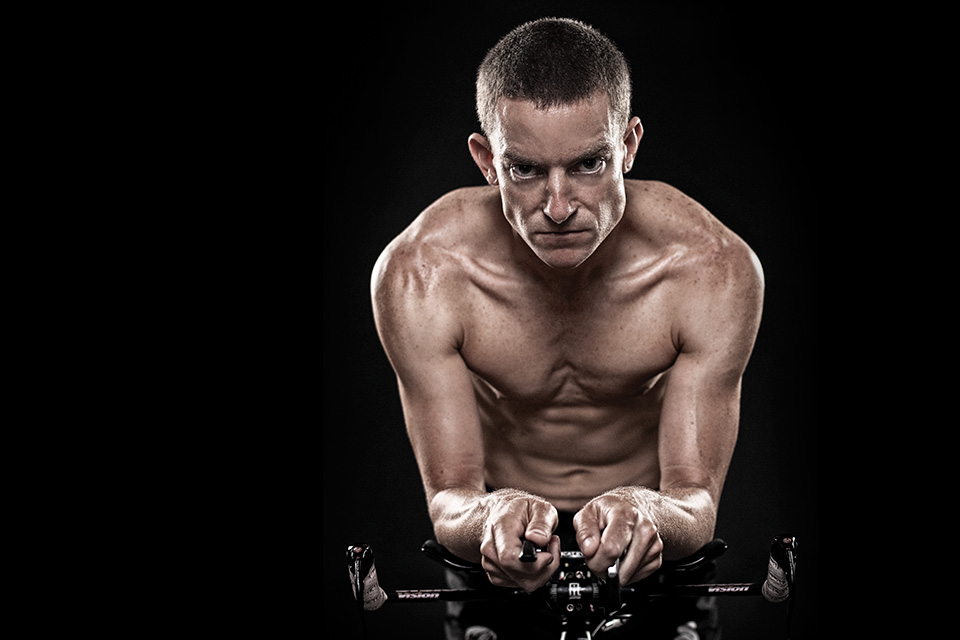Off-Season Insights from an Ironman Racer

As a professional triathlete, it’s my job to perform in races and get faster each year. Looking ahead at the 2015 racing season, I’m paying special attention to this off-season as a time to help prepare and ready myself. Not only do I need to get faster, but I need to get faster at a quicker rate than my competition. With now almost 1,000 registered Ironman professionals out there, each year the field gets more competitive, the times get faster, and the field gets larger. My job: to face these factors head on and continue to be successful.
In the last several seasons, I won one Ironman and had seven podium finishes at other Ironman-branded races. When I reflect on my race history from a place-based perspective, I’m very happy and satisfied. There were a number of races in the last couple seasons though where I didn’t perform to my expectations. Now that it’s the off-season, my new job is to analyze every aspect of my training and racing from the past year and look for areas to improve on. Like all athletes, I want to continue to grow in my sport. Here are some steps I am taking now to ensure my upcoming racing season is the best yet.
Self-Assessment
During my break, I have taken time to make a full assessment of myself and every aspect of my training and racing. I identified those things I felt were good and working, but also took note of any problematic issues or changes I need to make to continue to excel in my sport. I not only looked for changes, but made sure to note what has been working well so I don't fix what's not broken.
Coaching
I’ve been self-coached for many years, and I’ve learned a lot about myself through the process that I wouldn’t have discovered otherwise. I took myself to a new level in the sport by creating my own training plans and scheduling workouts with great athletes. Then, over this past year, I started working with a coach—one who wasn’t me. It took time for my body to adjust to another person’s style of training, but I soon noticed my body adapting in great ways. My coach and I are currently collaborating on how to address some of my shortcomings without hindering my strengths, and have set up a winter training plan to address these areas.
Equipment Choices
The triathlon industry's three sports are always evolving, and as they do, companies continue to release the latest and greatest gear and equipment. I decided to wade through the information overload to determine which trends and equipment upgrades are simply hyped-up marketing and which would actually lead to legitimate gains. I’m spending extra time and attention examining possible upgrades, reading the supporting research and data, and then weighing the pros and cons. For example, this last season I started working with a company who specializes in coating bicycle drive train components with low-friction coatings. While each piece individually saves an incremental amount, when you sum up all the moving parts on a bicycle, the savings you receive from reduced friction really add up. By sifting through the triathlon industry’s advancements in this way, I’m optimizing all of my equipment choices for next season. One piece at a time.
Bike Position
How we sit on our bicycles has a huge bearing on aerodynamics, physical power, and efficiency, as well as how well we run off the bike. I’ve been working with some of the best bike fitting experts in the industry to observe and understand how my body interacts with my machine, and little by little we're making changes to my seat position to optimize how I ride.
Races
As I craft together my race calendar for 2015, I’m taking great care to examine each race thoroughly. I’m looking for races that play to my strengths and shine the light away from my weaknesses. I don’t mean to say I’m picking races that are convenient—maybe because they're located nearby, or they just sound fun. I'm actually dissecting every race option—those both near and far away—to find where I think I can make the biggest impact. To find where I think I can lead the pack.
Mental Preparation
I’ve dabbled with sports psychology techniques on and off for several years, and have noticed that when I take the time to practice mental preparation exercises, I see results. Yes, it takes time and effort, but it’s well worth the work. Unfortunately, it’s all too easy to stop practicing these mental exercises since it just makes for one more thing to add on top of everything else competing for time and attention. But I’ve found that my performance improves when my head is in a good, centered, and confident place. This past season, I fell away from the practice. For this upcoming year, I’ve recommitted to my mental training program. It’s such an important aspect of racing, and it deserves more acknowledgement and attention.
By assessing myself and observing my strengths and weaknesses from the past year, I’ve found a few areas I need to work and improve on. By doing so, I know I’m positioning myself to have the best year of training and racing yet. If performance is important to you this year, I strongly urge you to do the same. We give so much of our lives and energy to the simultaneously demanding, draining, and super rewarding sport of racing. It's worth the time and effort it takes to step back, reflect, and make any changes that, when added together, will have a beneficial effect on your racing future.






